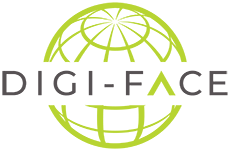Internal Publication
Starchy staples production shortfalls in Ghana: technical inefficiency effects outweigh technological differences across ecologies
Starchy staples are a major source of livelihood support for farmers, traders, and processors who participate in these crops’ value chains, while also providing staple food to many people, especially the less affluent in society. Despite this position, the productivity figures of starchy staples are low. We use a unique data set and meta-frontier efficiency analysis to assess whether the production shortfalls of major starchy staple crops in Ghana could be attributed to technical inefficiency, technology gaps or both. Results show strong evidence of about 50% production shortfall for cassava, yam, cocoyam, and plantain. For cassava production, the Guinea Savannah zone has the most superior technology, with a technology gap ratio of 0.92, while yam production is more technically efficient in the Sudan Savannah zone, with a technical efficiency score of 0.67. Cocoyam production is more technically efficient (0.56) in the Transition zone, but yam is more technically efficiently produced in the Coastal Savannah zone of Ghana. These results show that production shortfall is more influenced by pure farmer technical inefficiencies (about 45%) rather than by technology gaps (about 20%) along ecological lines. Thus, the sector could benefit from improvements in farmer managerial skills and efficient use of existing technologies.
Uploaded by: Isaac Gk AnsahAuthor: Ansah, Isaac Gk | ORCID: https://orcid.org/0000-0001-5071-6224
Co-author: Appiah-Twumasi, Mark | ORCID: https://orcid.org/0000-0002-4964-3248
Co-author: Tsiboe, Francis | ORCID: https://orcid.org/0000-0001-5984-1072
Institution: University for Development Studies Tamale | Centre: West African German Centre for Sustainable Rural Transformation (WAC-SRT)
Type: Journal article | English | Peer Reviewed
Subjects: Agriculture
Published in: PLoS ONE, ISSN 1932-6203 (online) | 18 (4): e0284780
Publisher of document: San Francisco: PLoS
Date: April 24, 2023 | Pages: 1-23
https://journals.plos.org/plosone/article?id=10.1371/journal.pone.0284780
Copyright: The Authors | License: Open Access - available under the Creative Commons CC0 public domain dedication


